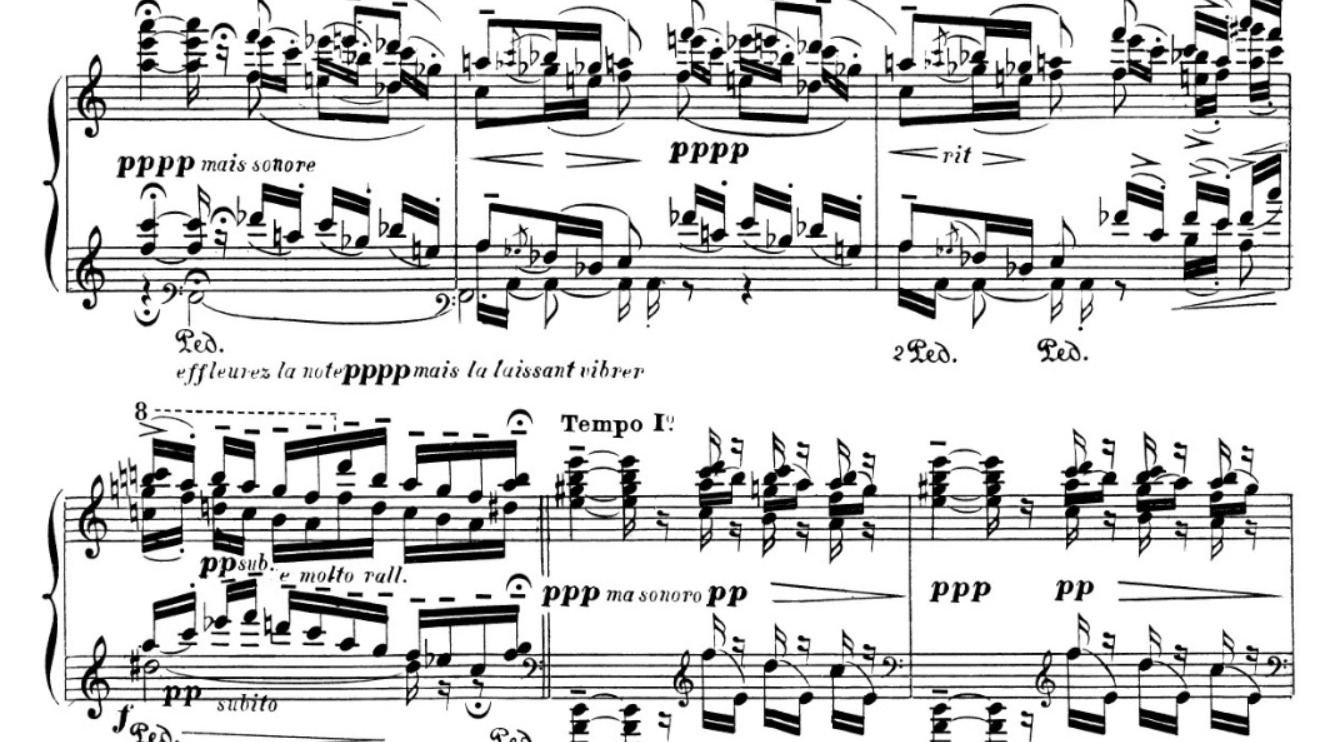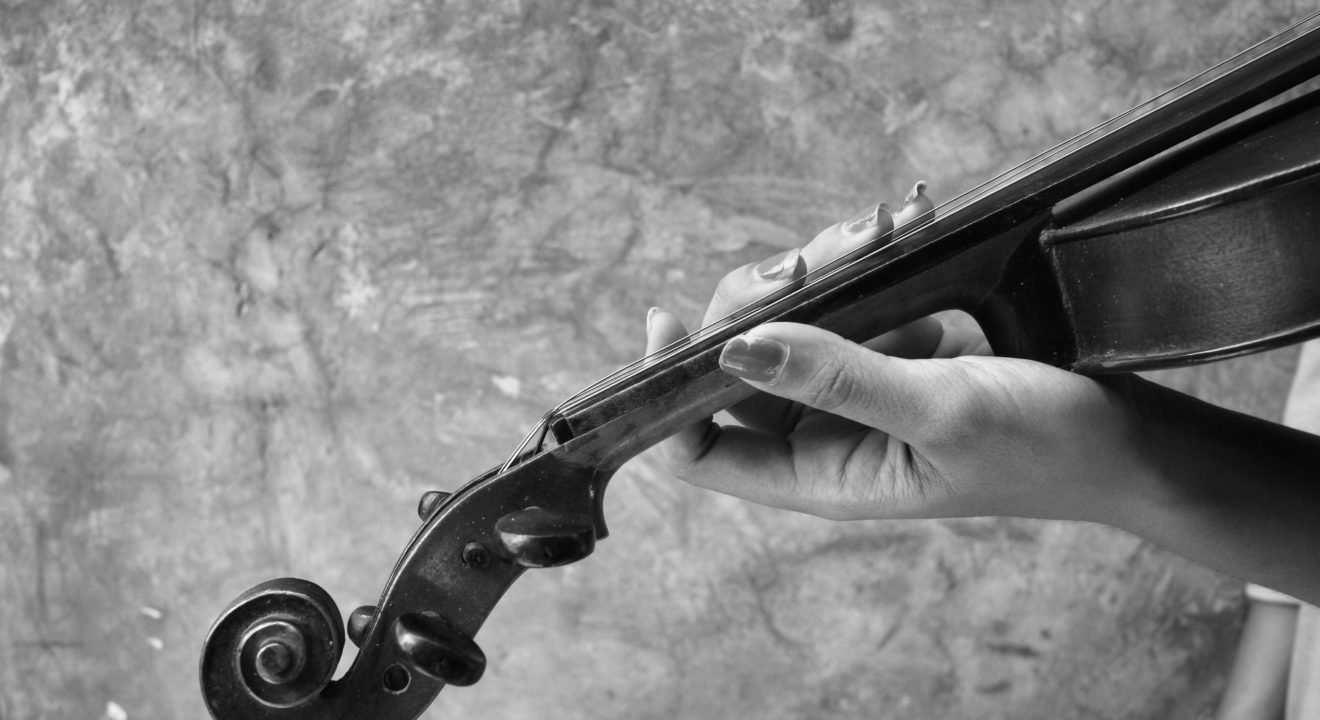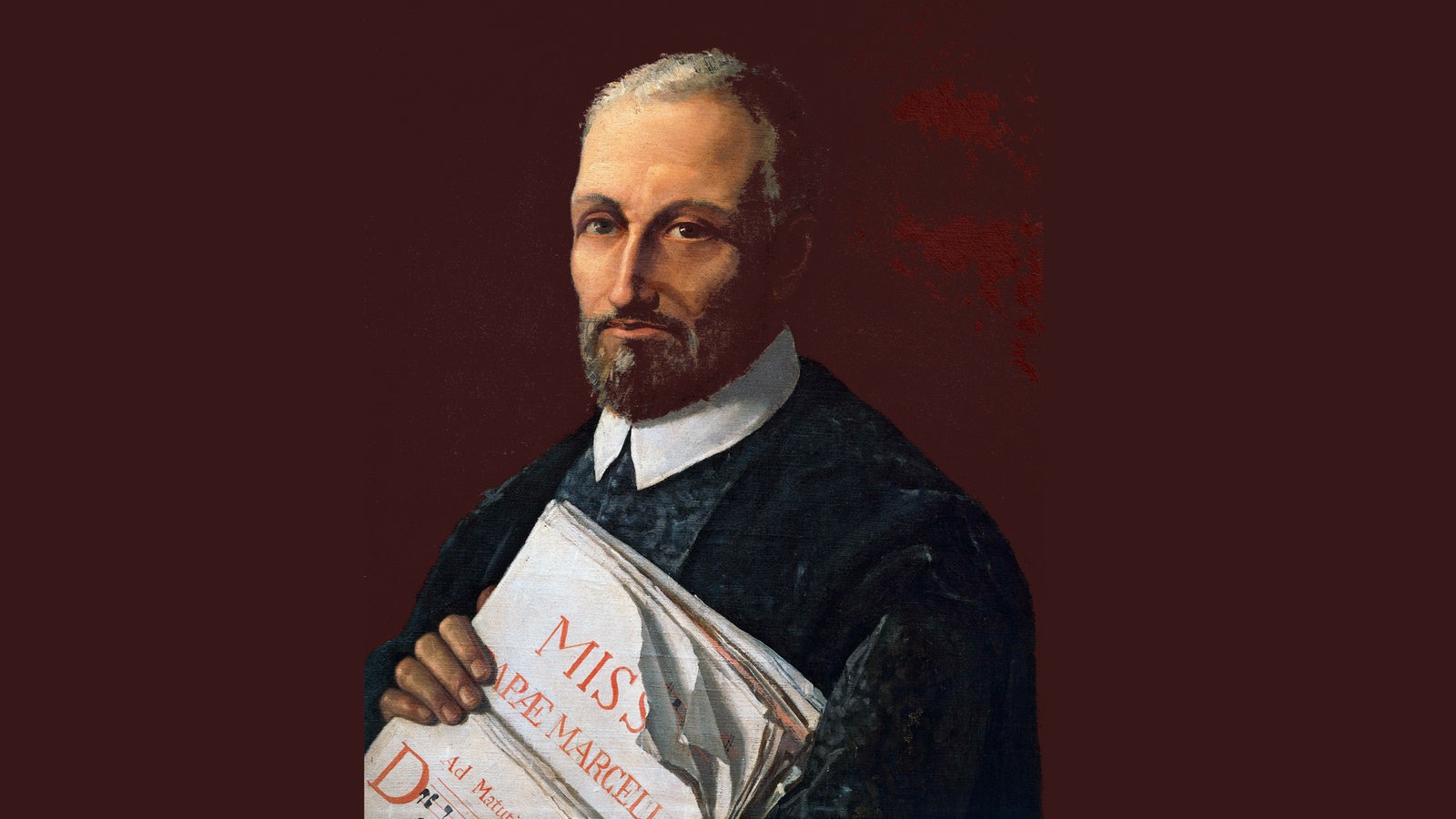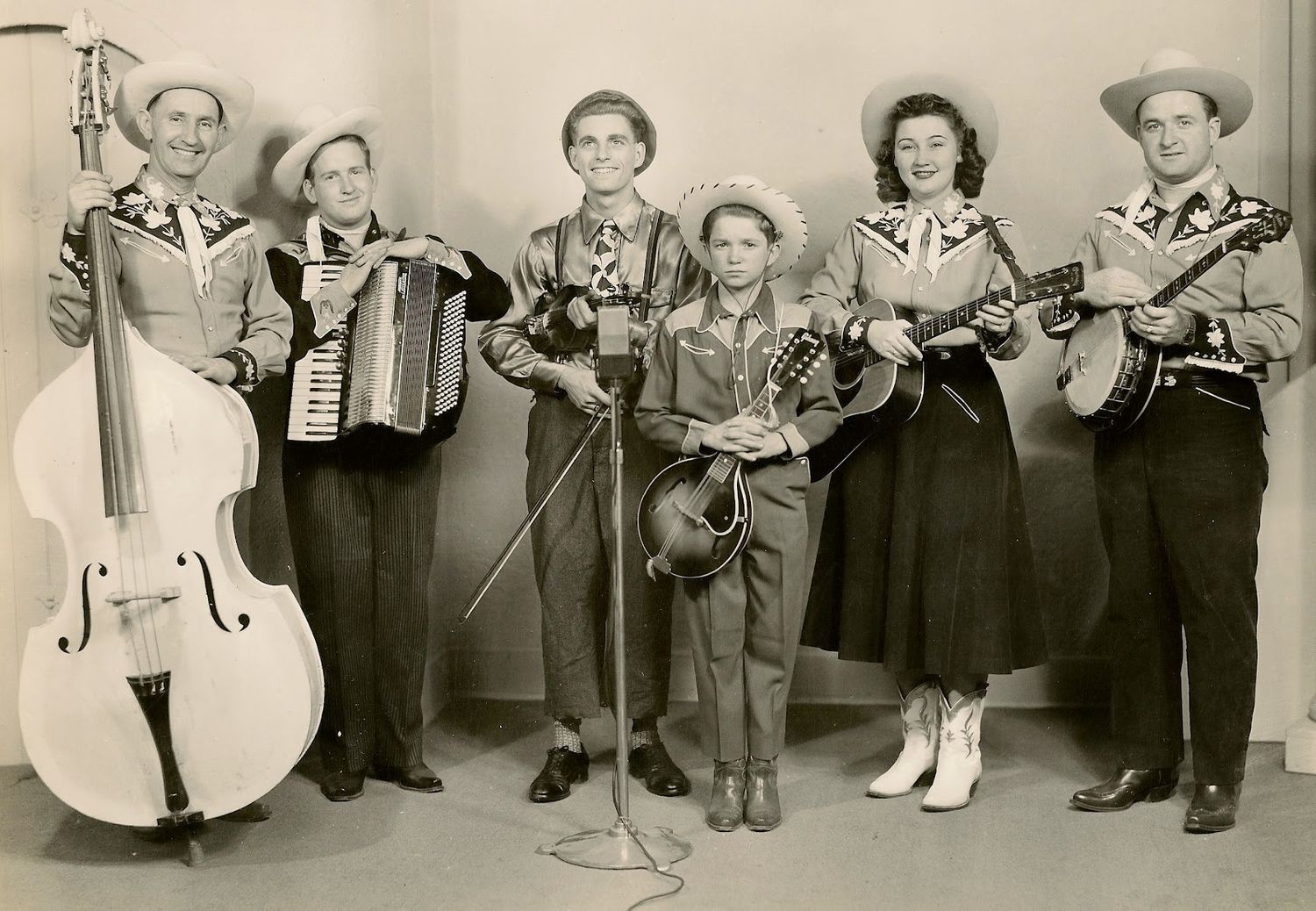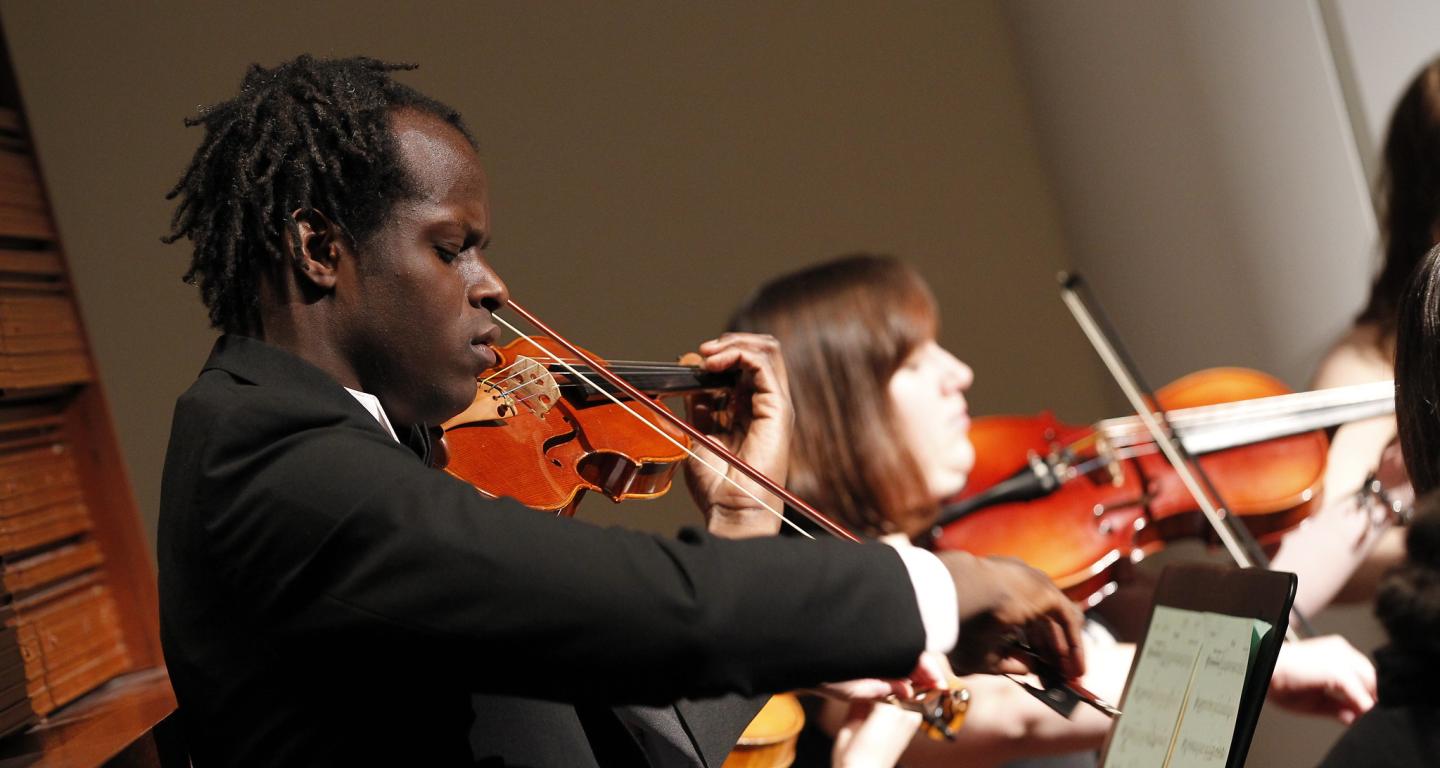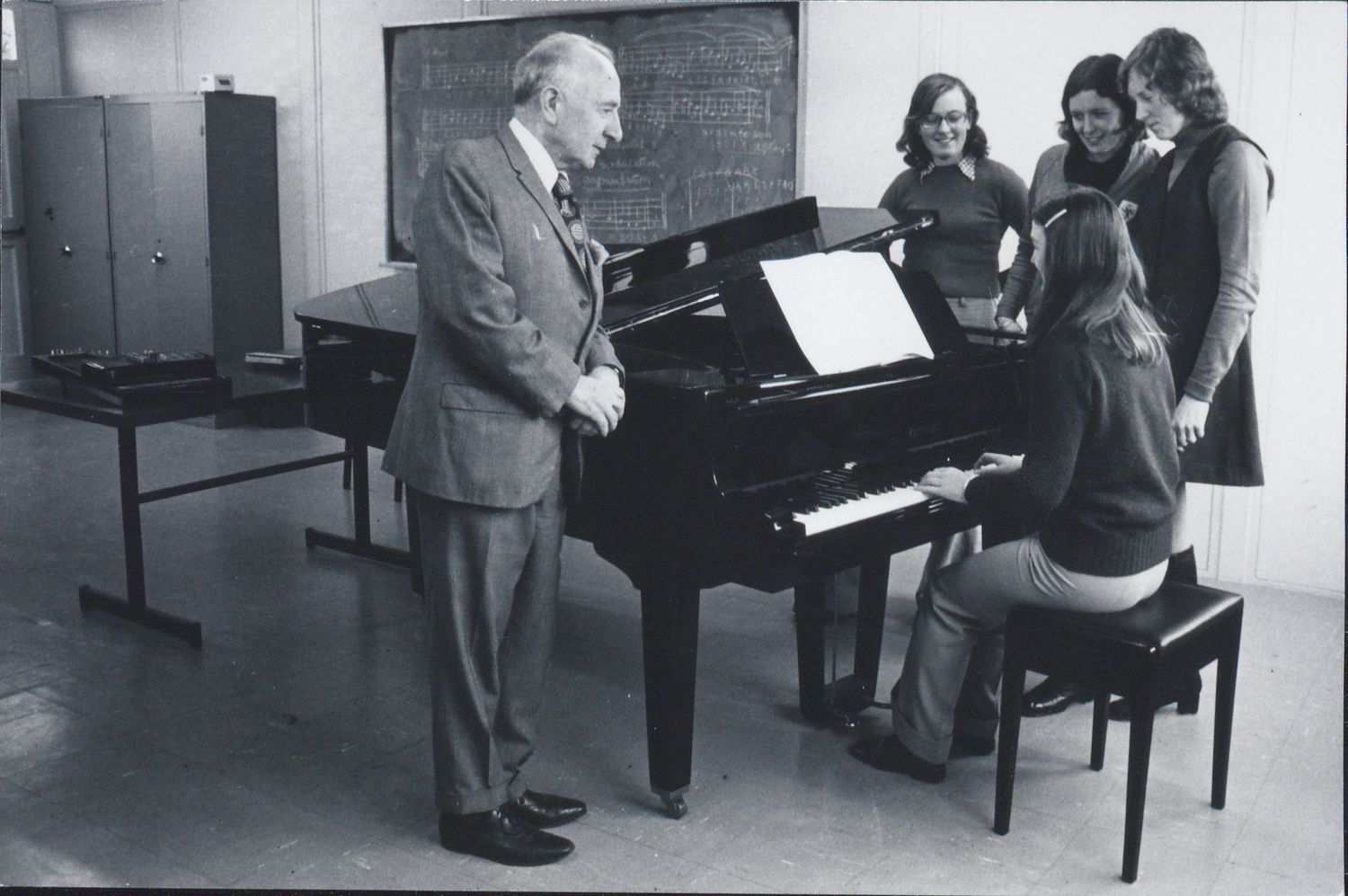Home>Events & Info>Music History>What Is The First Documented Time Period In Music History?


Music History
What Is The First Documented Time Period In Music History?
Modified: January 31, 2024
Discover the first documented time period in music history and explore the origins and significant milestones that shaped the fascinating world of music.
(Many of the links in this article redirect to a specific reviewed product. Your purchase of these products through affiliate links helps to generate commission for AudioLover.com, at no extra cost. Learn more)
Table of Contents
Introduction
Music has been an integral part of human civilization since time immemorial. It is a powerful form of expression that transcends language and cultural barriers, evoking emotions, capturing stories, and preserving history. To understand the evolution of music, we must delve into its rich and diverse history.
The documented history of music dates back thousands of years, with evidence of musical instruments and practices found in archaeological sites around the world. From the mystical sounds of prehistoric drums to the intricate melodies of symphonies, music has evolved and transformed alongside human civilization.
In this article, we will embark on a journey through the different eras of music history, exploring the key developments and influential figures that shaped the musical landscape. Each period of music history brings with it distinct styles, techniques, and cultural influences, showcasing the creativity and innovation of musicians throughout the ages.
As we delve into the depths of music history, it is essential to appreciate the diversity of musical traditions and genres that have emerged across the globe. From European classical music to African rhythms, from Asian melodies to Latin-American beats, music has a universal language that connects people across borders.
Throughout this article, we will uncover the mysteries of ancient music, witness the birth of iconic musical movements, and explore the impact of technological advancements on the creation and distribution of music. So, grab a seat and prepare to immerse yourself in the fascinating journey of music history.
Prehistoric Era
The prehistoric era refers to the period before the advent of written history, where evidence of musical practices can only be found through archaeological discoveries. The earliest indication of music comes from ancient instruments, such as flutes made from bird bones and drums crafted from animal skins.
During this time, music played a vital role in rituals, ceremonies, and communal gatherings. It served as a means of communication, expression, and connection with the spiritual realm. The rhythmic beats of drums and chants echoed through ancient caves, bringing communities together and invoking a sense of unity.
Though the exact musical styles and melodies of the prehistoric era remain unknown, these early forms of music laid the foundation for future musical development. They provided a basis for the creation of melodic patterns, rhythmic structures, and vocal techniques that would evolve over time.
One noteworthy discovery from the prehistoric era is the “Venus of Hohle Fels,” a figurine found in Germany that is believed to be the world’s oldest musical instrument. The figurine, carved from mammoth ivory and dating back over 40,000 years, features notches that indicate it was used as a flute-like instrument.
Another significant artifact is the “Lion-Man” figurine found in the Hohlenstein-Stadel cave in Germany. This sculpture, estimated to be around 40,000 years old, depicts a hybrid creature with a lion’s head and a human-like body, possibly representing a spiritual or mythical being associated with music and cultural rituals.
While the specifics of prehistoric music may forever remain a mystery, these ancient artifacts provide glimpses into the profound role that music played in early human societies. It laid the groundwork for the development of musical expression, paving the way for the rich tapestry of music that would emerge in subsequent eras.
Ancient Music Period
The ancient music period refers to the time in history when written records began to emerge, providing us with more detailed insights into musical practices. This era encompassed various civilizations, including those of ancient Egypt, Mesopotamia, Greece, and Rome.
Ancient Egyptian music, dating back over 4,000 years, was deeply intertwined with religious rituals and ceremonies. Musical instruments such as harps, flutes, and drums were used in temple rituals and as accompaniment to storytelling and dance. The Egyptians believed that music had the power to connect human beings with the gods and bring about harmony and balance.
In ancient Mesopotamia, music held a prominent role as well. The Babylonians, Assyrians, and Sumerians utilized diverse musical instruments, including lyres, lutes, and reed pipes. Music was performed in royal courts, religious ceremonies, and taverns, and it was believed to have therapeutic properties.
Greece, often considered the birthplace of Western music, experienced a flourishing of musical development during the ancient era. The Greeks had a deep appreciation for the arts and incorporated music into various aspects of society. From religious ceremonies to theatrical performances, music was an integral part of Greek culture. Notable ancient Greek musicians, such as Pythagoras and Aristoxenus, made significant contributions to music theory and composition.
In ancient Rome, music played a vital role in both religious and social contexts. Romans used instruments like the lyre, trumpet, and flute in religious ceremonies, parades, and civic gatherings. Music was a means of entertainment, expression, and communication, reflecting the diverse cultural influences that shaped the Roman Empire.
The ancient music period witnessed the emergence of musical notation, allowing composers and musicians to preserve and share their compositions. The development of notation systems in ancient Greece and Rome paved the way for more sophisticated musical structures and the transmission of musical ideas across generations.
While records from the ancient music period may be limited, the artifacts and writings that have survived give us valuable insights into the importance of music in ancient civilizations. They reveal a deep reverence for music’s power to convey emotions, connect individuals, and elevate spiritual experiences, setting the stage for the musical innovations that would follow.
Medieval Period
The Medieval Period, also known as the Middle Ages, was a time of significant musical development spanning roughly from the 5th to the 15th century. This era marked the transition between the ancient and modern periods and saw the emergence of new musical forms and practices.
Throughout medieval Europe, music was deeply intertwined with the Catholic Church and played a central role in religious ceremonies. Gregorian chant, also known as plainchant, dominated the musical landscape during this time. It consisted of monophonic melodies sung in Latin, characterized by a free-flowing, meditative style.
In addition to Gregorian chant, polyphony began to emerge during the Medieval Period. Polyphony is the combination of multiple independent melodies, creating complex harmonies. This development spurred the growth of secular music as well, with troubadours and trouveres composing songs in vernacular languages and performing them at courts and social gatherings.
One of the most influential musical manuscripts from the medieval period is the Codex Las Huelgas, which contains a collection of polyphonic compositions. Written in the 14th century, it provides a glimpse into the sophisticated musical practices of the time.
The rise of Gothic architecture and cathedrals during the medieval period also influenced music. The grand acoustics of these structures allowed for the creation of elaborate choral performances and organ music. Composers such as Hildegard von Bingen and Guillaume de Machaut left lasting legacies with their sacred compositions, showcasing the richness and complexity of medieval music.
Despite the focus on religious music, secular music thrived as well. Songs of courtly love, troubadour poetry, and dance music entertained nobles and commoners alike. Instruments such as the recorder, lute, and harp were widely used, adding texture and depth to medieval compositions.
Overall, the Medieval Period was a time of immense musical exploration and innovation. It laid the foundation for future developments in Western music, shaping the way we understand and appreciate music to this day.
Renaissance Period
The Renaissance Period, spanning from the 14th to the 17th century, was a time of rebirth and cultural growth in Europe. This era witnessed a profound shift in musical styles and marked the transition from medieval traditions to the beginnings of modern musical practices.
One of the defining characteristics of the Renaissance Period was the emergence of humanism, an intellectual movement that placed emphasis on the value and potential of the individual. This shift in thinking had a significant impact on music, with composers aiming to express human emotions and experiences through their compositions.
Polyphony continued to be an important element of Renaissance music. However, there was a greater emphasis on clarity and balance in the individual voices. This resulted in the development of intricate contrapuntal techniques, exemplified by composers such as Josquin des Prez and Giovanni Palestrina.
The printing press, invented in the 15th century, revolutionized the dissemination of music. Printed musical scores became more accessible, allowing for wider distribution and preserving musical works for future generations. This facilitated the exchange of musical ideas across geographic regions, leading to a greater diversity of styles and influences.
Instrumental music also began to gain prominence during the Renaissance Period. Composers explored new forms and genres, such as the instrumental dance suite and consort music. The lute, viols, and keyboard instruments became popular choices for solo and ensemble performances.
One of the most significant developments of the Renaissance Period was the birth of opera. This new form of musical theater combined music, drama, and visual spectacle, paving the way for the future of Western opera. Claudio Monteverdi, with his innovative compositions, is considered a key figure in the early development of opera.
The patronage of wealthy individuals and the church played a crucial role in fostering the thriving musical culture of the Renaissance. Esteemed composers and musicians found support from patrons who recognized the cultural and social value of music. This support enabled composers to create masterpieces and pushed the boundaries of musical expression.
The Renaissance Period represents a time of flourishing artistic expression and innovation. It laid the groundwork for the musical advances and diversity that would come in subsequent eras, making it an essential chapter in the history of music.
Baroque Period
The Baroque Period, spanning roughly from the early 17th to the mid-18th century, was a time of extravagance, grandeur, and artistic expression. This era in music history witnessed a significant shift in styles and approaches, with composers embracing new forms, techniques, and ornamentation.
The term “Baroque” originates from the Portuguese word “barroco,” which means irregular pearl. This aesthetic of complexity and ornamentation is reflected in the music of the period. Baroque music is characterized by elaborate melodies, dramatic contrasts, and virtuosic performances.
One of the hallmarks of Baroque music is the basso continuo, a bassline that provides a harmonic foundation while allowing for improvisation and embellishment. The basso continuo, typically played by a harpsichord or organ, supported the intricate melodic lines of the upper voices.
Italian composer Claudio Monteverdi is often regarded as one of the pioneers of Baroque music. His compositions, including his operas and sacred works, showcased the expressive potential of the human voice and introduced new musical forms and techniques.
Another prominent figure of this period is Johann Sebastian Bach. His music encapsulates the essence of Baroque style, with its intricate contrapuntal writing, complex harmonies, and profound emotional depth. Bach’s compositions spanned various genres, from sacred choral works to keyboard music, leaving an indelible mark on the musical landscape.
Opera continued to flourish during the Baroque Period. Composers such as George Frideric Handel and Jean-Baptiste Lully created grand operatic works that combined music, drama, and elaborate stage productions. The era also saw the development of the concerto, with composers like Antonio Vivaldi revolutionizing the form and elevating the role of the soloist.
Baroque music found favor in the courts and churches across Europe. The music of this period reflected the opulence and splendor of the aristocracy and the grandeur of religious ceremonies. Composers like Jean-Philippe Rameau and Arcangelo Corelli found patronage from nobles and clergy, allowing them to create intricate compositions that pushed the boundaries of musical expression.
The Baroque Period was a time of immense creativity and innovation in music. The ornate melodies, complex harmonies, and virtuosic performances that emerged during this era set the stage for the musical developments that would follow, making the Baroque Period a crucial chapter in the history of Western music.
Classical Period
The Classical Period, spanning from the mid-18th to the early 19th century, is known for its elegance, balance, and clarity in musical composition. This era marked a shift away from the complexity and ornamentation of the Baroque period, towards a style that embraced simplicity, clarity of form, and emotional restraint.
The Classical Period saw the rise of prominent composers such as Wolfgang Amadeus Mozart, Ludwig van Beethoven, and Franz Joseph Haydn. These composers sought to create music that was accessible to a broader audience, focusing on melodic beauty, clear structures, and refined expression.
One of the defining characteristics of the Classical Period is the development of the symphony and the concerto. Composers, including Haydn and Mozart, expanded these forms, exploring new orchestrations and experimenting with the balance between soloist and ensemble.
The sonata form emerged as a primary structure in Classical compositions. This form, consisting of three main sections – exposition, development, and recapitulation – provided a framework for composers to showcase their thematic ideas and harmonic progression.
During the Classical Period, the piano became a dominant instrument, replacing the harpsichord. Composers like Mozart and Beethoven composed a wide range of piano sonatas and concertos, exploiting the expressive capabilities of the instrument.
The emergence of the public concert hall also had a significant impact on the Classical Period. Composers now had the opportunity to reach a wider audience, and music began to be performed for paying patrons rather than being limited to the court or church. This shift contributed to the democratization of music and the rise of a middle-class audience.
The elegance and balance of Classical music were evident in the compositions of Mozart, who effortlessly blended melodic beauty, technical virtuosity, and emotional depth. Beethoven, on the other hand, pushed the boundaries of the Classical style, injecting his music with passion, drama, and innovation.
While the Classical Period is often associated with the music of Mozart and Beethoven, it is important to note that many other composers made significant contributions to this era. Haydn, for instance, composed a vast number of symphonies and string quartets, establishing these forms as cornerstones of the Classical repertoire.
The Classical Period marked a shift towards a more refined and structured approach to music. Its influence can still be felt in the music of today, with composers drawing inspiration from the clarity, balance, and timeless beauty that characterized this golden era of classical music.
Romantic Period
The Romantic Period, spanning from the early 19th to the early 20th century, was a time of intense emotion, passion, and individual expression in music. In contrast to the restraint and balance of the Classical Period, composers of the Romantic era sought to push the boundaries of musical expression, embracing heightened emotions, virtuosity, and personal narratives.
The Romantic Period was characterized by a departure from the formal structures of the Classical era. Composers, such as Ludwig van Beethoven, Franz Schubert, and Frédéric Chopin, infused their music with a sense of freedom, experimentation, and subjectivity. The symphony expanded in size and scope, and the orchestra grew in size, allowing for more dramatic and colorful soundscapes.
Romantic music embraced the concept of “program music,” where composers aimed to depict extra-musical ideas, narratives, or evoke specific moods within their compositions. This shift led to the rise of programmatic works such as symphonic poems, tone poems, and opera, with composers like Richard Wagner and Hector Berlioz leading the way.
The piano remained a predominant instrument during the Romantic Period, with composers like Chopin and Franz Liszt revolutionizing the repertoire for solo piano. Their compositions demonstrated technical virtuosity and explored a range of emotions, from tender lyricism to thunderous power.
Throughout the Romantic Period, nationalism played a significant role in shaping musical expression. Composers drew inspiration from their native cultures, folklore, and history, incorporating nationalistic elements into their compositions. Examples include the works of Antonín Dvořák, Edvard Grieg, and Bedřich Smetana, who celebrated the musical traditions of their respective countries.
The Romantic Period also witnessed advancements in musical technology, such as the invention of the valve system for brass instruments and improvements in the construction of pianos. These advancements expanded the possibilities for composers and performers, allowing for greater tonal and dynamic range.
The music of the Romantic Period aimed to evoke a wide range of emotions and transcend the boundaries of the human experience. Composers sought to communicate profound emotional depths, explore the depths of human existence, and challenge the norms of musical composition.
The Romantic Period gave birth to some of the most beloved and iconic works in the classical repertoire, leaving a lasting impact on the world of music. Its rich and diverse musical expressions continue to captivate audiences and inspire composers to this day.
20th Century and Contemporary Music
The 20th century and contemporary music period represents a time of incredible diversity, experimentation, and innovation in the world of music. This era witnessed a radical departure from traditional tonal structures, embracing new sounds, rhythms, and approaches to composition.
The early 20th century saw the rise of musical movements such as Impressionism, Expressionism, and Primitivism. Composers like Claude Debussy, Arnold Schoenberg, and Igor Stravinsky shattered the conventions of tonality, exploring new harmonic languages and expanding the possibilities of musical expression.
One of the most influential musical developments of the 20th century was the advent of electronic music. With the invention of the tape recorder and synthesizer, composers like Karlheinz Stockhausen and Pierre Schaeffer experimented with sounds that were previously unimaginable. Electronic music opened up entirely new sonic landscapes, pushing the boundaries of composition and performance.
The mid-20th century saw a resurgence of interest in tonality and accessibility in music with the emergence of Neoclassicism and Minimalism. Composers like Aaron Copland and Philip Glass incorporated tonal elements and repetitive structures into their works, bringing a sense of familiarity and accessibility to modern compositions.
The influence of popular music also became more pronounced in the 20th century. Jazz and blues, with their syncopated rhythms and improvisation, heavily influenced classical composers like George Gershwin and Olivier Messiaen, resulting in a fusion of styles and genres.
The latter half of the 20th century and beyond brought further experimentation and a blurring of musical boundaries. Avant-garde composers like John Cage and Steve Reich challenged traditional notions of composition, exploring concepts such as chance and indeterminacy. The incorporation of various world music traditions into Western classical compositions also became more prevalent, creating a diverse and multicultural musical landscape.
In the contemporary music scene, technology continues to play a significant role. Digital recording and production techniques have led to new possibilities for sound manipulation and composition. Composers and musicians explore the intersections of acoustic and electronic sounds, creating immersive and transformative musical experiences.
Furthermore, the 20th century and beyond have witnessed a greater emphasis on inclusivity and diversity in music. Composers from underrepresented backgrounds are gaining recognition and reshaping the classical music canon. The incorporation of different musical traditions, unconventional performance spaces, and interdisciplinary collaborations have all contributed to a more inclusive and dynamic contemporary music scene.
The 20th century and contemporary music period represents an era of remarkable innovation, diversity, and boundary-pushing experimentation. From the exploration of new harmonic languages to the fusion of musical genres, composers and musicians continue to shape the landscape of music, challenging conventions and creating new sonic experiences.
Conclusion
The history of music is a journey that spans centuries, continents, and cultures. From the primal beats of prehistoric drums to the technological marvels of contemporary compositions, music has evolved and adapted to reflect the ever-changing human experience.
Each era in music history has brought forth unique styles, techniques, and innovations, leaving a lasting impact on the musical landscape. From the ancient civilizations of Egypt and Greece to the symphonic brilliance of the Classical Period and the emotional fervor of the Romantic era, each period has contributed to the rich tapestry of musical expression.
As we progress into the 20th century and contemporary music, we witness a diverse and eclectic blend of genres, styles, and influences. Composers embrace experimentation, push the boundaries of composition, and incorporate elements of popular music, electronic sounds, and global traditions.
Technology has played a significant role throughout music history, from the printing press revolutionizing the dissemination of sheet music to the invention of electronic instruments, recording techniques, and digital production tools. These advancements have transformed the way music is created, performed, and shared, expanding the possibilities for artistic expression.
Music, as a universal language, connects people across cultures and time. It has the power to evoke emotions, share stories, and convey messages beyond the limitations of words. From the ancient rituals and communal gatherings of prehistoric times to the grand concert halls of today, music has remained an integral part of human existence.
The history of music is a testament to the creativity, innovation, and resilience of composers, performers, and music enthusiasts throughout the ages. It reminds us of the timeless beauty and enduring power of this art form.
So, whether we find ourselves captivated by the mystical melodies of the Middle Ages, the expressive complexities of the Baroque period, or the boundary-pushing sounds of contemporary compositions, let us embrace the rich and diverse history of music. Let us celebrate the melodies that have shaped our world, and let us continue to explore, create, and share the transformative power of music for generations to come.

